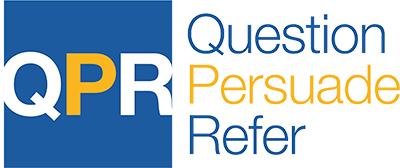Responding to Students in Distress
Yes
The student’s conduct is clearly and imminently reckless, disorderly, dangerous or threatening, including self harm or medical emergency.
More Info
Call 9-1-1 Or Public Safety (215.951.1300)
After speaking with the police or Public Safety, file a Standard Incident Report.
Not Sure
The student shows signs of distress, but I am unsure how serious it is. My interaction has left me feeling uneasy and/or concerned.
More Info
During Business Hours
Call the Students of Concern Case Manager (215.951.1048) Or file a Students of Concern Report.
After Hours and Holidays
Call the Student Counseling Center for 24/7 counseling assistance at (215.951.1355).
No
I’m not concerned for the student’s immediate safety, but s/he is having personal or academic issues and could use more support/resources.
More Info
Call the Students of Concern Case Manager (215.951.1048), file a Students of Concern Report, or refer the student to an appropriate campus resource.
Level One
These behaviors usually indicate that the student is in crisis and needs emergency care immediately.
Level Two
These behaviors may indicate significant emotional distress, reluctance, or an inability to acknowledge a need for personal help.
Level Three
Although the student is not disruptive to others in class, behavior may indicate that something is wrong and that help may be needed.
Academic issues
Mental Health Issues
RESPOND
REFER
Report
RECOGNIZE
Harassment
Disorderly Conduct
Disruptive or Threatening Conduct
RESPOND
Ensure your safety in the environment
REFER
Report
RECOGNIZE
RESPOND
REFER
RECOGNIZE
RESPOND
REFER
RECOGNIZE
Self Destructive Behavior
Marked Change in Social Interactions
Erratic or Irresponsible Behavior
Marked Change in Appearance
Signs of Depression
Anxiety Disorders
RESPOND
REFER
Support and Referral
If you have additional questions about responding to a student in distress, contact the Student Counseling Center (link) who can help with the following:
If someone you know is showing one or more of the following behaviors, he or she may be thinking about suicide. Don’t ignore these warning signs. Get help immediately.
Students of Concern was created to work with members of the La Salle community who are concerned about a student who may be a threat to themselves and others. The team provides action and support to address the needs of students who are distressed while assuring a safe and secure campus for the entire La Salle community.
Suicide is the 2nd leading cause of death among college students, with approximately 1,100 suicides occurring at colleges every year in the United States. In addition, many students experience some form of psychological distress such as anxiety, depression, and panic disorders. To address this issue, La Salle University was awarded the Garrett Lee Smith Suicide Prevention Grant funded by the Substance Abuse and Mental Health Services Administration (SAMHSA) to develop comprehensive, collaborative, and well coordinated suicide prevention and mental health services.
The primary purpose of the La Salle University Garrett Lee Smith Suicide Prevention Project is to reduce the potential for deaths of students due to suicide or alcohol/drug overdose by: 1) increasing outreach to our most vulnerable students; 2) enhancing mental health services and resources for all college students including those at risk for school failure; 3) establishing a critical mass of trained gate keepers; 4) promoting help seeking behaviors by students in need; and 5) improving the identification and treatment of at risk college students.
Innovative strategies to support mental health include the following:

QPR Training is an emergency health intervention for suicidal persons. The intent to help faculty and staff identify students who are experiencing suicidal ideations and psychological distress and direct them to proper care.

ProtoCall is a 24 hour, 7 days a week telephonic behavioral health service. Masters level clinical professionals respond to callers to provide immediate support, crisis intervention and stabilization. The service supports care coordination and risk management for undergraduate students. Students are referred to the Student Counseling Center and other resources on and off campus.

Kognito is an interactive role play simulation for students that builds awareness, knowledge and skills about mental health and suicide prevention and prepares them to lead real-life conversations with fellow students in distress and connect them with support.
The Family Rights and Privacy Act Privacy Act (FERPA) permits communication about a student of concern in connection with a health and safety emergency. Observations of a student's conduct or statements made by a student are not FERPA protected. Such information should be shared with appropriate consideration for student privacy.
Very few faculty and staff can offer confidentiality; therefore never promise confidentiality to a student. What you can promise is that information shared will be handled within a respectful and private matter.
For more information about the grant, contact Serita M Reels, at sreels@lasalle.edu or Brother Robert Kinzler, at kinzler@lasalle.edu.
This website was developed [in part] under grant no. 1H79SM080077-01, from the Substance Abuse and Mental Health Services Administration, Department of Health and Human Services, Garrett Lee Smith Campus Suicide Prevention Grant.